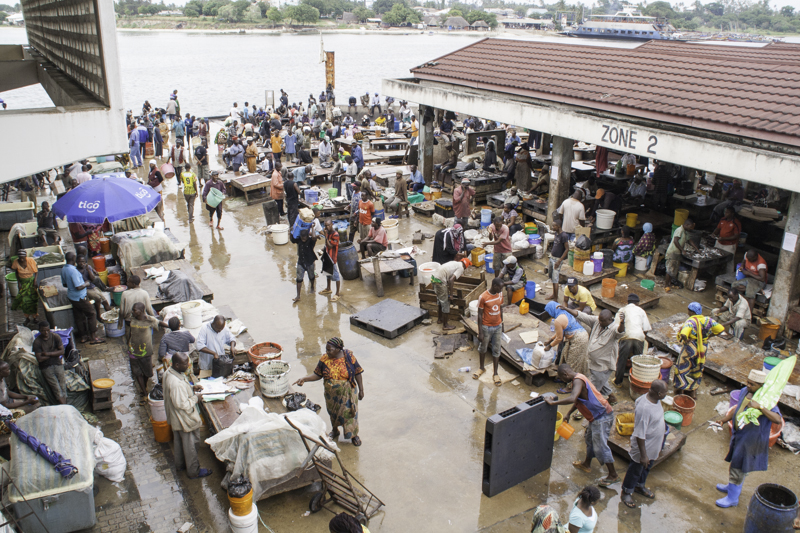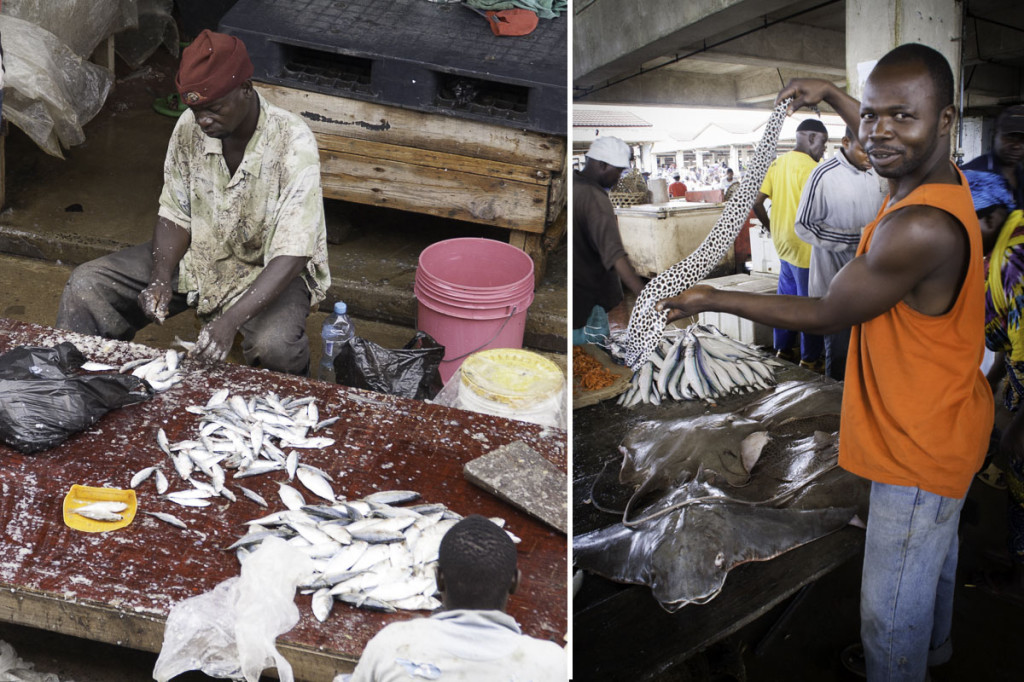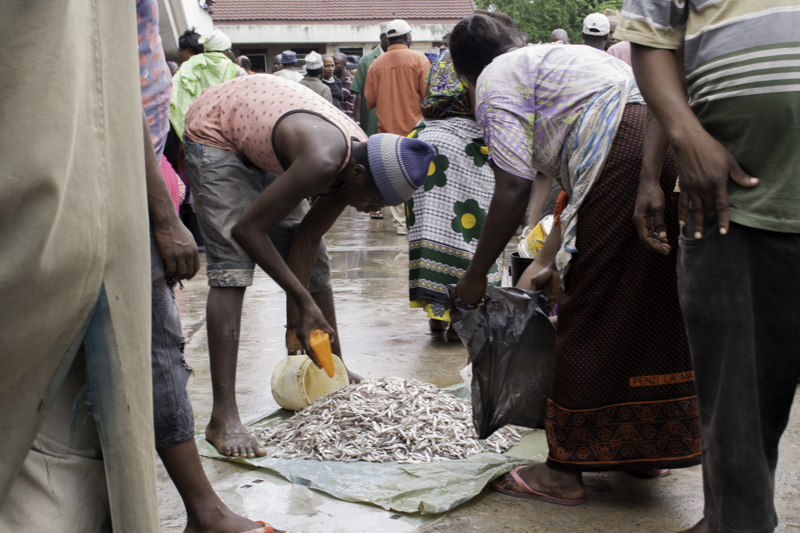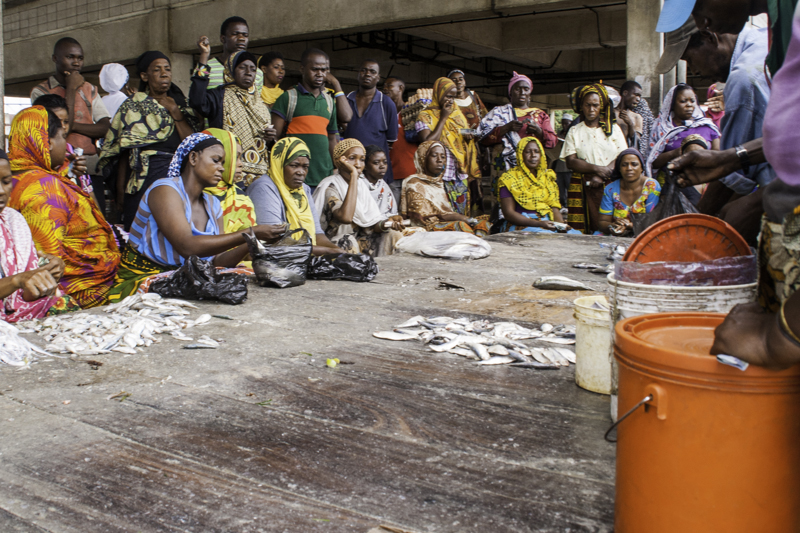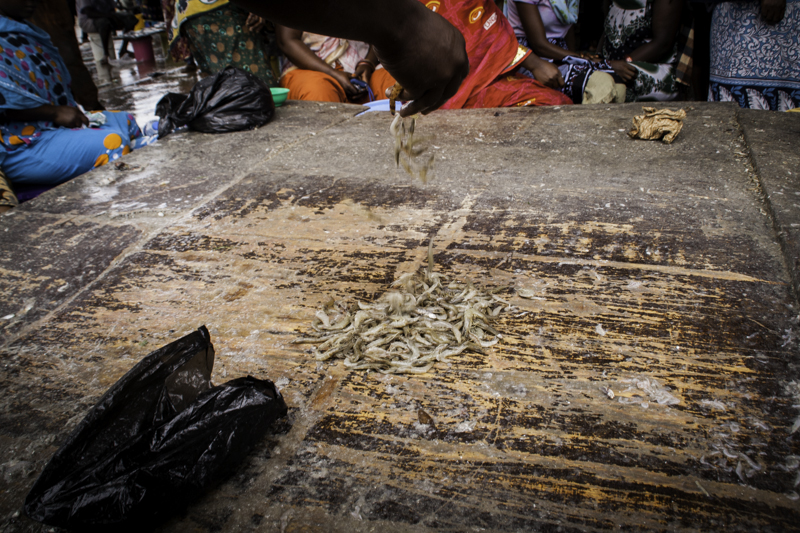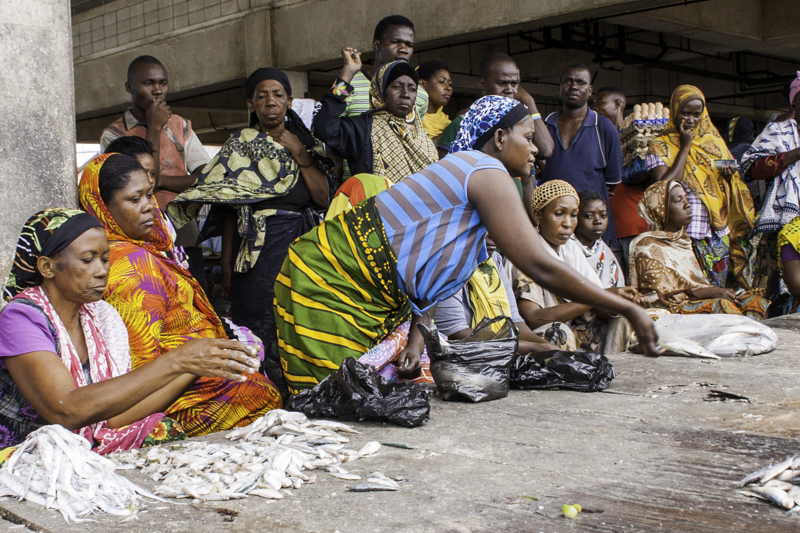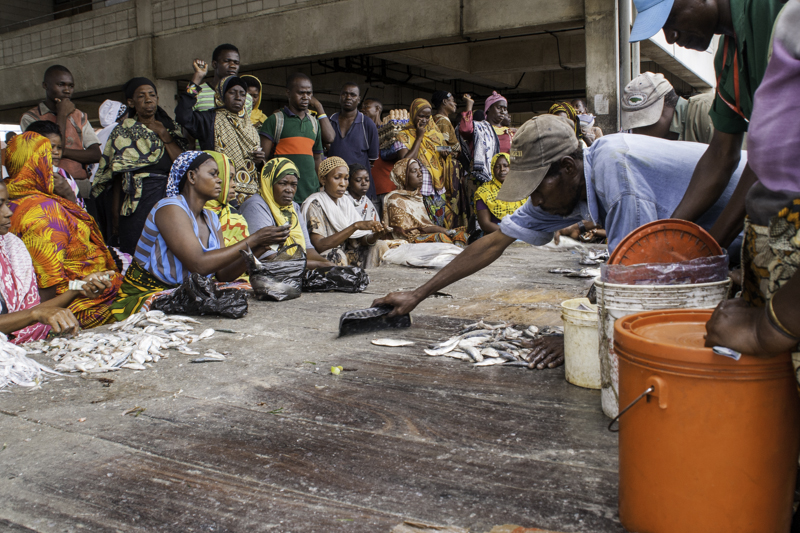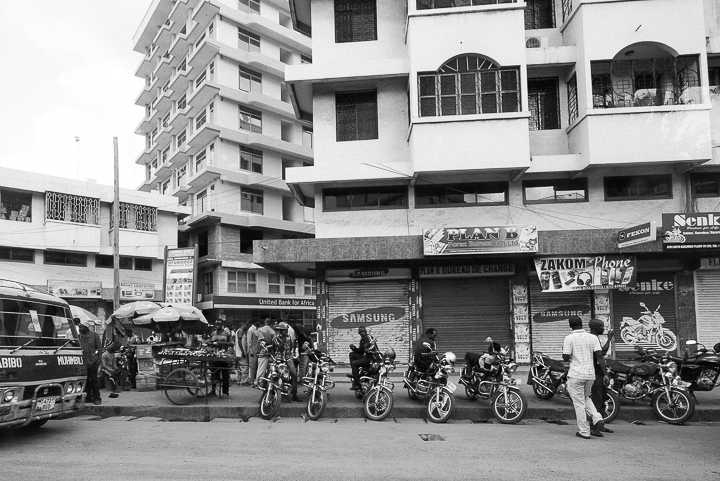Kivukoni Oceanfront near City Centre is a lively place in town; a peek into the REAL Dar es Salaam: Where Tanzanians flood the streets, old German colonial-style buildings line the ocean front, an old painted ‘Tanganyika Swimming Club’ sign restricts intruders from its long-since popular facilities, where the Kivukoni Ferry shuttles hundreds of passengers and vehicles to and from South Beach several times a day, and where the fish market, the biggest in Dar es Salaam, has been operating for decades.
Here, fishermen in wooden dhow boats bring in their daily catch, once at 7am and again at 10am every morning, selling to restaurants and individual patrons alike. Anything that is caught in the water is up for sale, from tiny sardines, to huge kingfish, to stingray and octopus and squid, to shrimps of all sizes. Fish and crustaceans are hawked for some of the cheapest prices in town within these narrow concrete aisles of the downtown fish market.
Perhaps the most fascinating scenes at the Kivukoni Fish Market, aside from the outrageous species of sea animals that are sold (for food? fodder? who knows.) are the continuous auctions for fresh catch pulled in.
It may be hard for a common bystander to tell exactly what the circular crowd gathered around a low scuffed wooden table is doing. But give it a few moments, and one will quickly be able to pinpoint the main players in any auction: auctioneer, sellers, buyers, and money collectors. Suddenly an old scuffed wooden tabletop is transformed into a platform for exciting possibilities and tension. Much like an art auctioneer at an art sale, the fish auctioneer at Kivukoni calls out bids in monotone drone, starting at a base amount and raising in increments of 500 to 1000 Shillings. His pace is not terribly quick, but it’s slurred and it’s faster than my rudimentary knowledge of Swahili is able to decipher.
On one side of the platform-made-auction table are the sellers, and on the other side, the buyers. These women–and the buyers are almost all women–line the auction table in a seated row, firmly planted on buckets that are later used to carry their purchases home on their heads. They are the meanest-looking, most serious women I have seen in all of Dar es Salaam. Like card sharks around a high-stakes game, they sit entranced, staring from fish to auctioneer to seller and back again at the fish, and occasionally cast a brief scowl towards the likes of any one (me) who distracts this ping-pong vision of theirs. I barely see the minute notions that are given to the auctioneer that indicates bids, but it seems the auctioneer does not miss a beat.
From shrimp, to squid, to giant eel-like fish and tiny sardine-type fish, all creatures of the ocean are presented for auction. If there is a science or logic behind the auctions, I certainly haven’t figured it out. Then again, I’m not about to ask one of these women. I mean, check out the scowl on that one in the front…

